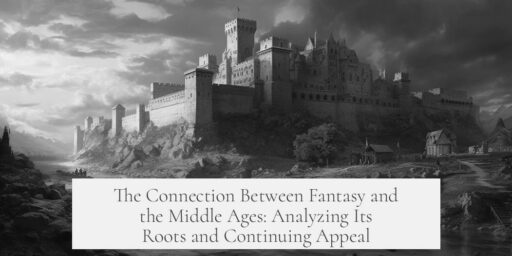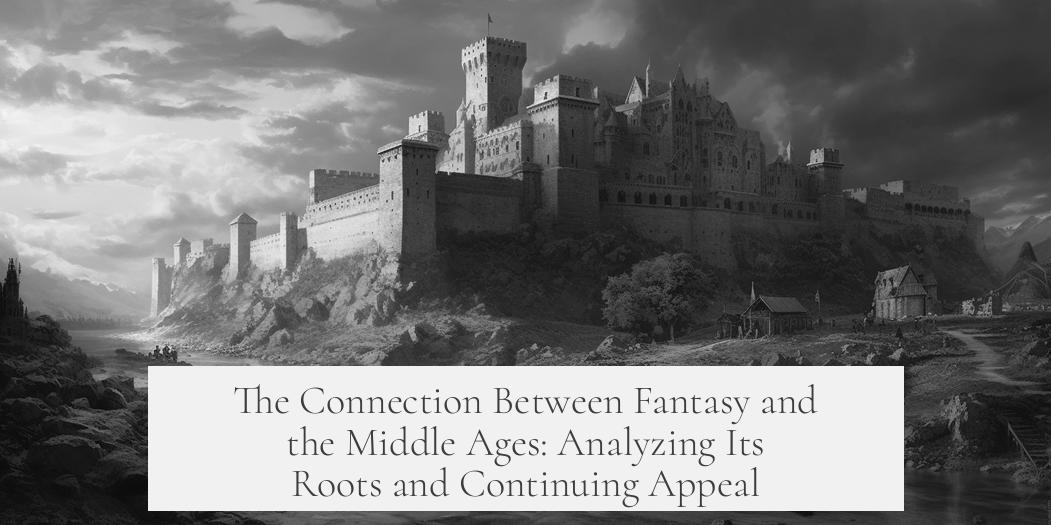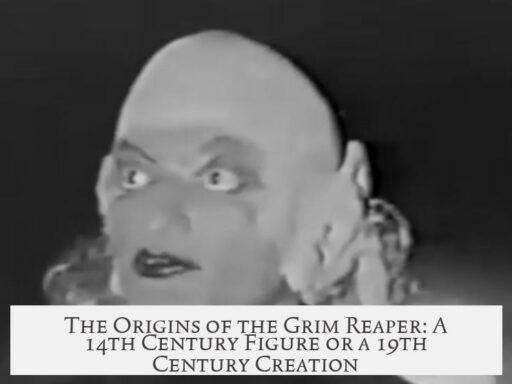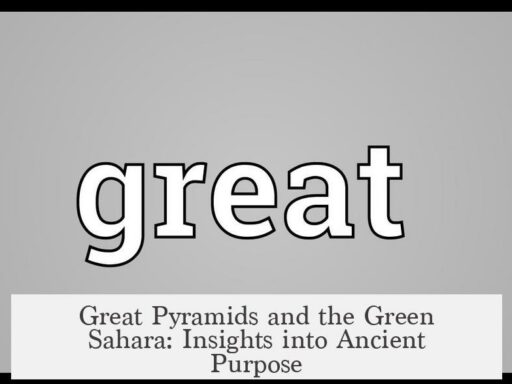Fantasy is set in the Middle Ages mainly because it draws upon a romanticised vision of the past, which popular culture has strongly influenced through key texts like J.R.R. Tolkien’s The Lord of the Rings and the role-playing game Dungeons & Dragons. This connection arises from fantasy’s roots in ancient myth and folktale, its literary tradition of evoking historical adventure, and the shaping impact of modern works that anchored it firmly within a medieval-like setting.
Fantasy, as a genre, is tricky to define with precision. It resists clear boundaries because it embraces creativity and imagination, often questioning norms and blending various traditions. Unlike genres with defined formulas, fantasy thrives on exploring myths, legends, and invented worlds. What many people commonly associate with fantasy—knights, castles, swords, and dragons—is just one expression within a broad and evolving genre.
At its core, fantasy often functions as a literature of the past. If science fiction explores futures, fantasy tends to look backward. It romanticises historical periods, inspiring mystery and adventure by revisiting or reimagining earlier eras. Its roots trace back to ancient myths, folktales, and fairy tales that provided narrative frameworks long before the modern genre emerged.
These root stories often evoke a pre-industrial, medieval-like world filled with magical creatures and quests. Such settings offer a rich backdrop for imaginative storytelling, connecting readers with an evocative sense of history infused with wonder. This has led to a tradition within fantasy that looks knowingly to a historical or pseudo-historical past, blending fact and fiction.
Modern fantasy’s familiar medieval association solidified largely because of Tolkien’s The Lord of the Rings. Published in the mid-1950s, it became a defining moment for the genre. Tolkien, a scholar steeped in myth and medieval literature, created a world that, while fictional, reflected many medieval elements—feudal societies, swordplay, castles, and ancient lore. Although Middle-earth is not strictly medieval historically, readers and subsequent creators have generally understood it as fitting the archetype of medieval fantasy.
This work transformed how fantasy was perceived. Its massive cultural impact established tropes that became central: elves, orcs, heroes on quests, and the struggle between good and evil in a medieval-style milieu. It was a landmark blending of ancient mythic influences with a well-crafted imagined world, setting a strong precedent for what fantasy “looks like.”
Following Tolkien, Dungeons & Dragons (D&D), launched in 1974, extended and entrenched the medieval fantasy setting in popular imagination. Its gameplay and world-building borrowed heavily from Tolkien’s mythos. The game’s reliance on a medieval-like backdrop—knights, castles, magic, and monsters—helped normalize this setting as the default for fantasy stories and games.
D&D evolved from medieval tabletop wargames like Chainmail, where players commanded armies of knights and soldiers. When the focus shifted to individual characters, the medieval context remained the assumed environment. This choice influenced countless players and writers, resulting in a proliferation of fantasy novels and campaigns that adopted similar medieval aesthetics.
Thus, D&D functioned as both a cultural and creative catalyst, encouraging storytelling within a medieval fantasy framework. It expanded the genre’s reach beyond literature into gaming and broader media, where the medieval setting became synonymous with fantasy adventures.
| Key Factors Connecting Fantasy to the Middle Ages |
|---|
| Fantasy’s focus on a romanticised past evokes medieval-like adventure and mystery. |
| Roots in myth, folktale, and fairy tale often portray pre-modern or medieval settings. |
| Tolkien’s The Lord of the Rings defined modern fantasy’s medieval aesthetics and themes. |
| Dungeons & Dragons adopted and reinforced medieval tropes and environments for role-playing. |
| Medieval tabletop wargames influenced D&D’s default medieval combat settings. |
Fantasy remains diverse, with authors exploring numerous cultures and times beyond the medieval. Yet the medieval association endures, shaped by cultural history and these major works. It provides a familiar imaginative canvas where themes of heroism, magic, and conflict are vividly explored.
- Fantasy is associated with the Middle Ages because it romanticises the past and draws on ancient myths connected to medieval-like settings.
- Tolkien’s work in the 1950s was crucial in defining the medieval style common in modern fantasy.
- Dungeons & Dragons extended and popularised the medieval fantasy setting in gaming and literature.
- The genre’s roots in myth and folktale influence the medieval atmosphere often found in fantasy worlds.
- Fantasy’s broad nature means it can resist strict definitions but medieval fantasy remains a dominant and recognizable form.
Why is Fantasy Set in the Middle Ages? Where Does That Connection Come From?
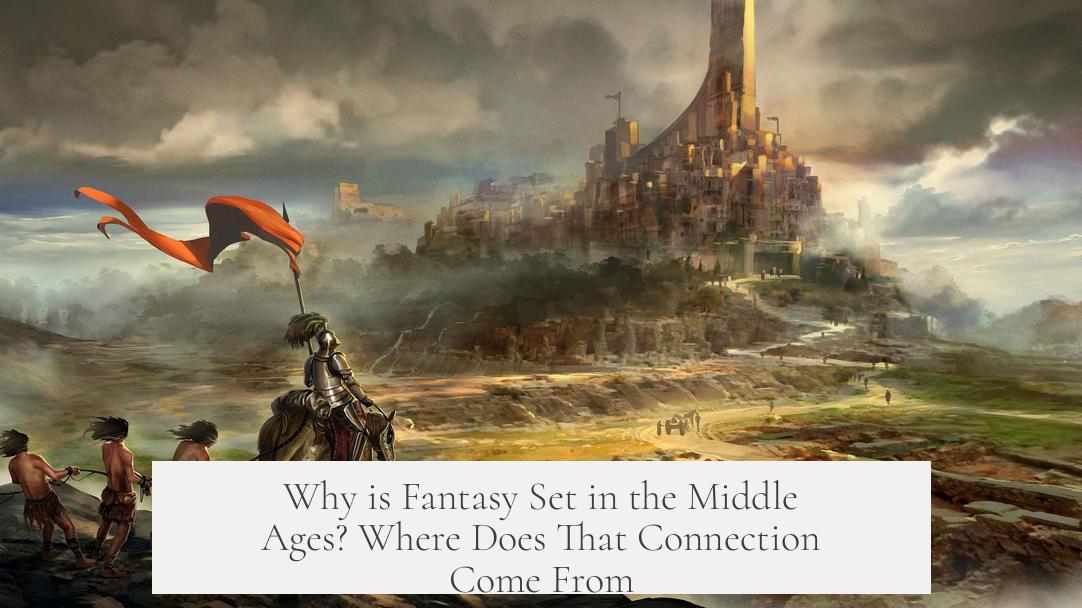
Fantasy is strongly linked to the Middle Ages because it romanticizes a past filled with adventure, mystery, and larger-than-life heroes — a world that popular culture, especially through Tolkien and Dungeons & Dragons, has shaped into the go-to medieval fantasy playground.
Let’s unpack this connection with a bit of storytelling and a dash of culture. After all, why does so much fantasy look like knights in armor, castles, and dragons? Is it just nostalgia, or something deeper?
The Elusive Nature of Fantasy Genre
First, defining fantasy is tricky. Genres are labels we slap on stories to help us understand them quickly, but fantasy resists neat boxes. Why? Because fantasy thrives on imagination and bending reality.
You might find yourself thinking, “I know fantasy when I see it,” but pinning down exact definitions is more of an art than a science.
Modern fantasy often feels medieval because people imagine it that way. Yet, writers stretch far beyond castles and swords, crafting stories that don’t necessarily fit the medieval mold at all. Still, that classic medieval feel sticks in popular imagination.
Fantasy’s Fascination with the Past
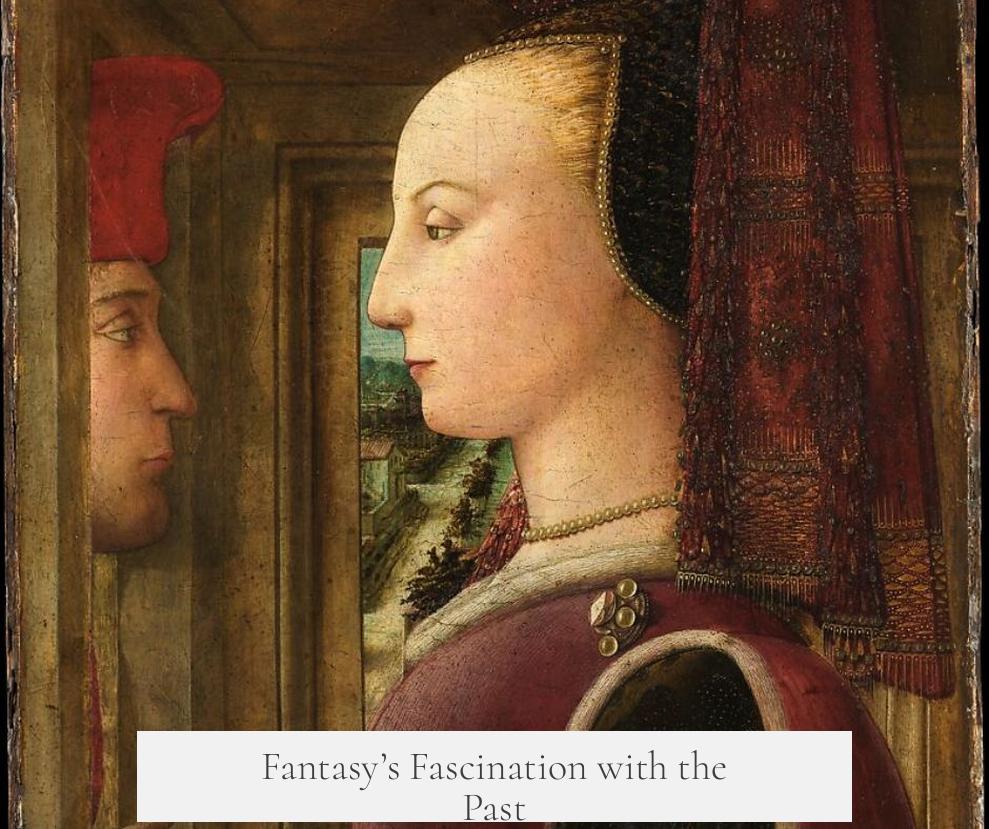
Wondering why fantasy often looks backward instead of forward? It’s simple: fantasy is a genre deeply rooted in the past. If sci-fi dreams about the future, fantasy dives into history, or rather, a romanticized version of history.
This isn’t just about dusty old times; it’s about evoking adventure and mystery. That allure of a world before modern life offers an ideal backdrop for epic quests and magical happenings.
The origins of fantasy trace back to ancient myths and folktales, evolving through fairy tales and other early stories. These “taproot texts” feed modern fantasy, making it a self-aware genre that often draws upon its past both thematically and stylistically.
Tolkien and Dungeons & Dragons: The Twin Pillars
Jump to the mid-20th century. J.R.R. Tolkien publishes The Lord of the Rings in 1954-55, a defining moment in fantasy’s history. Tolkien knew myth, legend, and ancient tales like few others. His world, Middle-earth, though not exactly a medieval Europe replica, sets the template for what fantasy “looks like.”
His work popularized elves, orcs, and epic quests, cementing a medieval-style fantasy aesthetic in popular culture. This influence is hard to overstate — it shaped decades of storytelling.
Then, in the 1970s, Dungeons & Dragons built on Tolkien’s foundation. It started with medieval tabletop wargames like Chainmail, where players controlled armies of knights. D&D shifted the focus to individual characters but retained that medieval vibe.
Players found themselves roaming dungeons, fighting dragons, and questing through a setting that felt medieval by default. D&D’s mechanics and scenarios spread that image of fantasy almost everywhere the game went.
This fusion of Tolkien’s narrative depth and D&D’s interactive play created a “medieval fantasy” template — a setting where swords, sorcery, and knights became the norm. It’s no surprise that so many fantasy novels, games, and films echo this theme.
Why Do We Still Love This Medieval Fantasy?
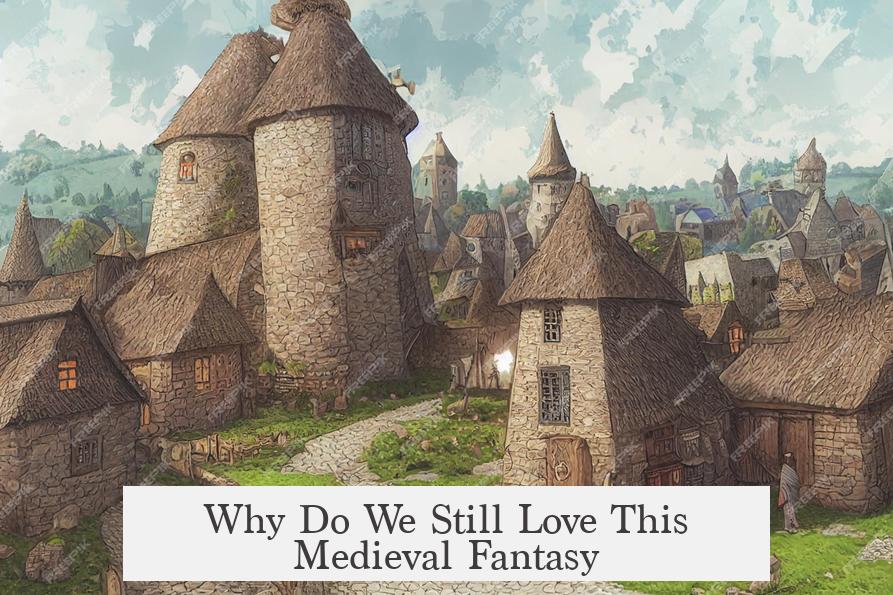
Do you think it’s just about nostalgia? Partly. That medieval world feels familiar and timeless. It offers a clear conflict between good and evil, a sense of chivalry and honor, plus the magic element keeps things exciting.
Fantasy set in the Middle Ages taps into something universal: the desire for adventure mixed with the comfort of history. It’s a playground where imagination runs wild but within a recognizable framework.
Plus, the medieval setting plays nicely with themes of heroism, social order, and the unknown—perfect for stories where magic disrupts everyday life.
So, What’s the Takeaway?
Fantasy’s medieval twist comes from a mix of cultural fascination with history, deep literary roots in myths and folktales, and the undeniable impact of Tolkien and Dungeons & Dragons.
But remember, not all fantasy is medieval. The genre is vast and evolving. Some stories explore futuristic themes, urban settings, or entirely original worlds beyond any historical period.
Still, the medieval fantasy remains the default mental image because it captures imagination, history, and myth all in one cozy package.
How Can You Use This in Your Own Reading or Writing?
- Explore the Classics: Start with Tolkien to see why so much modern fantasy echoes his work.
- Try Non-Medieval Fantasy: Look for fantasy set in different periods or invented worlds to appreciate the genre’s range.
- Write Your Own Twist: If you write fantasy, consider how using or subverting medieval elements can impact your story.
- Keep Context in Mind: The Middle Ages as imagined in fantasy is a romanticized version, not a history lesson. Knowing this allows you to enjoy the genre’s creativity without confusion.
Ultimately, fantasy’s medieval connection is less about history and more about the story it helps tell—a story of adventure, magic, and our endless love for the past’s mysteries.
Why is fantasy often linked to the Middle Ages?
Fantasy tends to draw on a romanticised past, exploring history through myths and legends. This past focus often aligns with the medieval era, known for its castles, knights, and quests.
How did Tolkien influence the medieval setting in fantasy?
Tolkien’s Lord of the Rings shaped modern fantasy by blending myth and medieval-style elements. Though his Middle-Earth isn’t exactly medieval, it set a template many works follow today.
What role did Dungeons & Dragons play in connecting fantasy to the Middle Ages?
D&D borrowed heavily from Tolkien and medieval wargames. It placed characters in medieval-like worlds and normalized settings filled with knights, elves, and orcs, reinforcing the medieval fantasy trope.
Is all fantasy set in medieval times?
No. Fantasy is diverse and often resists strict definition. Many modern stories explore different worlds and times. The medieval connection comes mainly from cultural touchstones rather than genre rules.
Why does fantasy emphasize the past rather than the future?
Unlike science fiction, which looks forward, fantasy often romanticises the past. It uses myths and folktales that come from historical eras, making the Middle Ages a natural backdrop.
